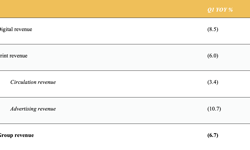For all of the buzz and activity on both sides of "The Pond," digital publishing remains new territory, whose potential (and even definition) is still being explored and assessed. This reality was clear during the first Digital Magazine Forum, held by Digital Magazine News in December in New York City.
Virtually all of the dozen-plus US business and consumer publishers who presented at the forum, representing a variety of business models, reported reaping some real benefits from digital. Some are employing digital versions of controlled or paid print publications to reduce costs by converting existing subscribers, or to reach out to new, qualified readers domestically and internationally. Some (Hearst, for example) are using digital issues as immediate-delivery value-addeds or premiums for new, paid print subscribers. Still others are creating revenue streams by offering separate or repurposed content in new digital formats, or launching cost-effective, digital-only vertical publication spin-offs within the broader markets that they serve.
A short lived format?
At the same time, all agreed that, at least when it comes to digital replicas of existing titles, the challenges can range from operational complications to disappointing download rates to scepticism or resistance from traditional advertisers. Indeed, while citing intriguing early results from IDG’s digital forays (such as a free PDF download of MacWorld that generated 200,000 downloads within four weeks), CEO Pat Kenealy opined that it’s still unclear whether digital magazines will turn out to be a short-lived format "like the eight-track tape," or a revolutionary medium more akin to the Internet.
Whatever the longer term may hold, there’s no debating that digital requires both investment and a period of trial and error. With that in mind, Eric Rutter, VP, controlled circulation for Reed Business Information, offered a checklist of the many issues that publishers should resolve before deciding whether to take the digital leap. (RBI, which currently has 29 titles with digital circulation, all but two controlled and BPA audited, with 180,000 total digital subs out of four million total combined circulation, realized $1 million-plus in manufacturing / distribution savings in 2004 alone as a result of digital versions.)
A summary of Rutter’s checklist:
* Management buy-in and support. Does executive management believe in digital? Will they provide the requisite resources / funding? Will they require involvement by all key internal constituencies?
* Objectives. Do you want to reduce manufacturing / distribution costs? Meet customer expectations, such as media neutrality, faster issue delivery, or enhanced functionalities? Develop new revenue streams, such as paid, non-qualified circulation or new advertising / rich media dollars? Expand the brand into new areas, such as international circulation? Launch digital-only products such as supplements, new publications, or custom publishing projects?
* Will your readers and advertisers welcome digital? Conduct thorough market research and focus groups to determine which titles’ subscribers and advertiser bases are likely to be receptive to digital. Many advertisers are open to a digital circulation component and, with sufficient reader acceptance, cost savings can be substantial.
* Digital vendor selection. Research which types of publishers each vendor has as its customers. Determine whether you want a downloaded reader technology or browser-based product. Will you license the software, or pay a fee per subscriber serviced? Do you want full service from your vendor, or will you allocate staff to handle certain functions? What usage / tracking reports does each vendor offer?
* Organizational preparedness. Is there a formal business plan and budget (including manufacturing / distribution savings, advertising / subscription revenue, systems and process requirements, and timelines for each)? Are key internal constituencies fully engaged and informed about their responsibilities and goals, and aware that going digital will require substantial work?
* Editorial. Are editors prepared to coordinate article and design format decisions across the two media, juggle digital / print deadlines and handle changes in the production process?
* Production. Have manufacturing workflows been created for both print and digital? Are quality control systems in place to review digital versions? Can you accommodate special digital ad sizes / formats? Have standards / specs been created for rich media? Where will digital editions be hosted?
* Fulfilment. Can existing systems accommodate digital fulfilment, including print order creation, demographic / geographic splits, reports, customer service (format switches, etc.), undeliverables, audit bureau requirements? If not, what must be done? How much will it cost? How long will it take to build?
* Circulation. Have realistic digital circulation objectives and overall magazine / brand goals been established? Will digital be used to grow total circulation, or replace more expensive print circulation? If your competitors have digital, what circulation models have worked / not worked for them? What is the minimum / maximum amount of digital needed to interest advertisers? Is there a clear circulation promotion plan? Is the digital edition request question on your qualification / order card? Does your web site offer a digital-edition FAQ?
* Sales / marketing. Are sales staff trained to explain and sell digital circulation? Will they have sufficient internal support for rich media / non-traditional advertising options? Should you establish special digital edition rates? (At present, most US and UK BPA members are opting to include their digital subs, which, on average, account for about 15 percent of total circulation, in their top-line circulation report data and overall rate bases.)
FEATURE
E-magazines: lessons learned
Karlene Lukovitz reviews the recent Digital Magazine Forum held in New York.










